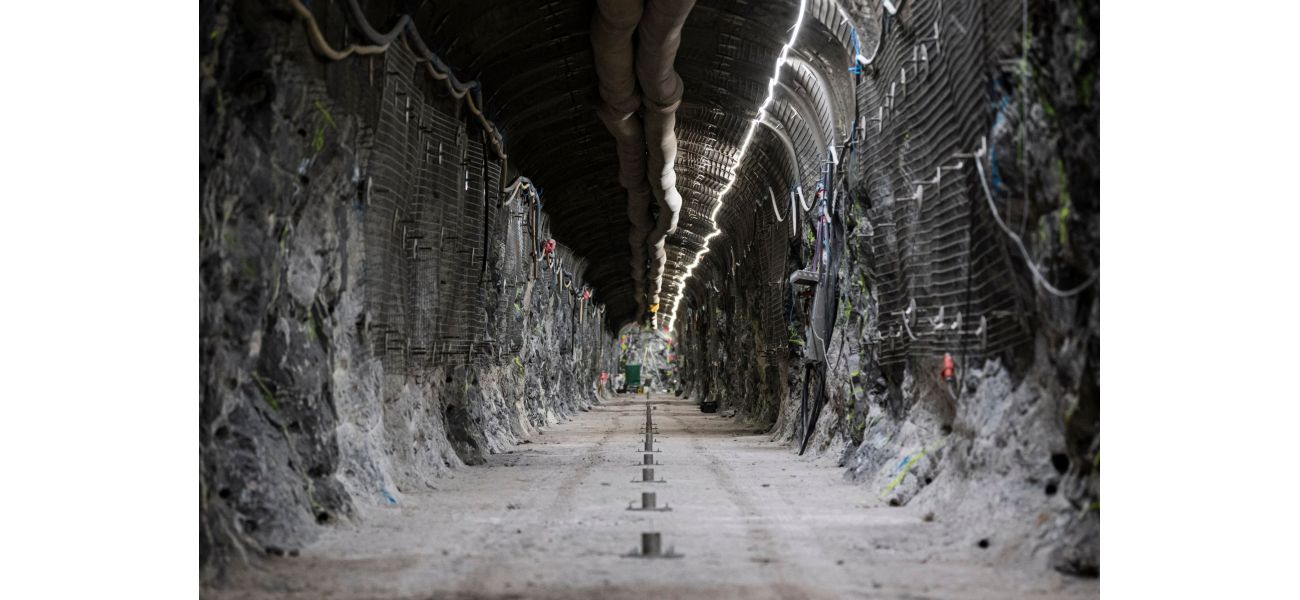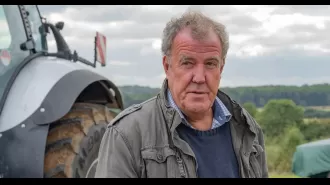Hide harmful items for thousands of years with proper storage techniques.
Scientists want to ensure that it won't return, even if society collapses.
September 1st 2024.

Let's take a moment to imagine a scenario: you have enough materials to fill St. Paul's Cathedral five times over. The catch? These materials are incredibly toxic and will remain hazardous for centuries to come. The question then becomes: where on Earth can we store this dangerous waste?
This has been a pressing issue since the dawn of the atomic age roughly 80 years ago, when J Robert Oppenheimer first introduced nuclear testing and power. Both military and civilian activities have generated large amounts of radioactive waste that must be disposed of properly. But where exactly is that?
Neil Hyatt, Chief Scientific Adviser to the UK's Nuclear Waste Services, explains that some options were quickly ruled out. For example, why not just launch the waste into space? Well, as it turns out, space launches have a high rate of failure, and the thought of a satellite crashing back to Earth is frightening enough, let alone radioactive waste.
Others suggested storing the waste in remote areas, far from civilization. However, this would require ensuring that future generations, thousands of years from now, would know to stay away from these sites as languages and symbols evolve over time. Some even proposed using new religions, hostile architecture, and even glowing cats to warn future humans. This resulted in one of the most fascinating Wikipedia pages ever created.
In the early days, the UK disposed of their radioactive waste by dumping it in the sea near the Channel Islands. But as political pressure grew and the London Convention banned marine dumping of radioactive materials, scientists had to get more creative.
Eventually, the international community agreed on a solution: bury the waste deep underground. This idea may seem straightforward, but it is complicated by the extreme timescales involved. After all, this waste will remain hazardous for the next 100,000 years – that's about how long it's been since humans first left Africa.
Professor Hyatt explains that they are searching for rock formations that have remained stable for millions of years, as the radioactivity of the waste will decrease significantly within the first 300 years. After that, it will continue to decay, but at a much slower rate. After roughly 100,000 years, the radioactivity will reach a level similar to that of the original uranium ore.
Currently, the UK has three potential sites for their geological disposal facility: Mid-Copeland and South Copeland in Cumbria, and Theddlethorpe in Lincolnshire. However, these sites are free to withdraw from the process at any time.
This approach is heavily influenced by Onkalo in Finland, a similar project that is decades ahead of the UK's efforts. According to site operator Posiva's spokesperson, Pasi Tuohimaa, the success of these projects often depends on political situations and effective communication.
But despite any potential challenges, the selected sites have a strong incentive to follow through with the project – the sheer scale of it. The UK's 750,000 cubic meters of waste will be stored in tunnels covering an area of approximately 36 square kilometers at depths ranging from 200 to 1,000 meters. If all goes according to plan, the process of depositing the waste will begin in the 2050s and take about 175 years to complete.
This is truly a massive infrastructure project, and yet, it is one that most people have never even heard of. As Professor Hyatt notes, it will be a "long, long, long, long mission life." Similar to the construction of a medieval cathedral, generations of people will work on this project, knowing that they will never live to see its completion when the waste is finally backfilled and hidden from sight.
The Finnish nuclear waste at Onkalo will be stored in rock that has barely moved in close to a billion years, demonstrating just how safe it is. According to Mr. Tuohimaa, the nuclear industry is the only one that knows where its waste will be located even after the next ice age. "When there's no London left, and there's two kilometers of ice on top of northern Europe," he explains, "everything is destroyed, but we will still know where our waste is."
This has been a pressing issue since the dawn of the atomic age roughly 80 years ago, when J Robert Oppenheimer first introduced nuclear testing and power. Both military and civilian activities have generated large amounts of radioactive waste that must be disposed of properly. But where exactly is that?
Neil Hyatt, Chief Scientific Adviser to the UK's Nuclear Waste Services, explains that some options were quickly ruled out. For example, why not just launch the waste into space? Well, as it turns out, space launches have a high rate of failure, and the thought of a satellite crashing back to Earth is frightening enough, let alone radioactive waste.
Others suggested storing the waste in remote areas, far from civilization. However, this would require ensuring that future generations, thousands of years from now, would know to stay away from these sites as languages and symbols evolve over time. Some even proposed using new religions, hostile architecture, and even glowing cats to warn future humans. This resulted in one of the most fascinating Wikipedia pages ever created.
In the early days, the UK disposed of their radioactive waste by dumping it in the sea near the Channel Islands. But as political pressure grew and the London Convention banned marine dumping of radioactive materials, scientists had to get more creative.
Eventually, the international community agreed on a solution: bury the waste deep underground. This idea may seem straightforward, but it is complicated by the extreme timescales involved. After all, this waste will remain hazardous for the next 100,000 years – that's about how long it's been since humans first left Africa.
Professor Hyatt explains that they are searching for rock formations that have remained stable for millions of years, as the radioactivity of the waste will decrease significantly within the first 300 years. After that, it will continue to decay, but at a much slower rate. After roughly 100,000 years, the radioactivity will reach a level similar to that of the original uranium ore.
Currently, the UK has three potential sites for their geological disposal facility: Mid-Copeland and South Copeland in Cumbria, and Theddlethorpe in Lincolnshire. However, these sites are free to withdraw from the process at any time.
This approach is heavily influenced by Onkalo in Finland, a similar project that is decades ahead of the UK's efforts. According to site operator Posiva's spokesperson, Pasi Tuohimaa, the success of these projects often depends on political situations and effective communication.
But despite any potential challenges, the selected sites have a strong incentive to follow through with the project – the sheer scale of it. The UK's 750,000 cubic meters of waste will be stored in tunnels covering an area of approximately 36 square kilometers at depths ranging from 200 to 1,000 meters. If all goes according to plan, the process of depositing the waste will begin in the 2050s and take about 175 years to complete.
This is truly a massive infrastructure project, and yet, it is one that most people have never even heard of. As Professor Hyatt notes, it will be a "long, long, long, long mission life." Similar to the construction of a medieval cathedral, generations of people will work on this project, knowing that they will never live to see its completion when the waste is finally backfilled and hidden from sight.
The Finnish nuclear waste at Onkalo will be stored in rock that has barely moved in close to a billion years, demonstrating just how safe it is. According to Mr. Tuohimaa, the nuclear industry is the only one that knows where its waste will be located even after the next ice age. "When there's no London left, and there's two kilometers of ice on top of northern Europe," he explains, "everything is destroyed, but we will still know where our waste is."
[This article has been trending online recently and has been generated with AI. Your feed is customized.]
[Generative AI is experimental.]
0
0
Submit Comment





